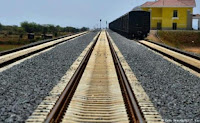Banks' Mergers to create regional behemoths

Joshua Oigara: CEO KCB Group This is the year of Mergers and Acquisitions in the financial and telecoms sectors in Kenya. According to the scheme of things, these marriages must be consummated by the end of this year. Finance and Telecoms are the vibrant sectors of the Kenyan economy. The mergers will produce titans, especially in the financial sector, dwarfing their competitors. In the financial sector, Kenya’s largest bank by assets, Kenya Commercial Bank will acquire a 100 percent stake in the National Bank of Kenya in a share swap. Another group, the NIC group will merge with the Commercial Bank of Africa, also, in another share swap, creating the third-largest banking group with more than 100 branches in the country and the East Africa region. These acquisitions will place the Kenyan financial market firmly in the hands of indigenous banks. Local banks have swiftly shunted local branches of Multinational Banks, such as Barclays Bank and Standard Chartered Bank...










